Full List of 55 Survival Items on “Alone” (and 33 that are Forbidden)
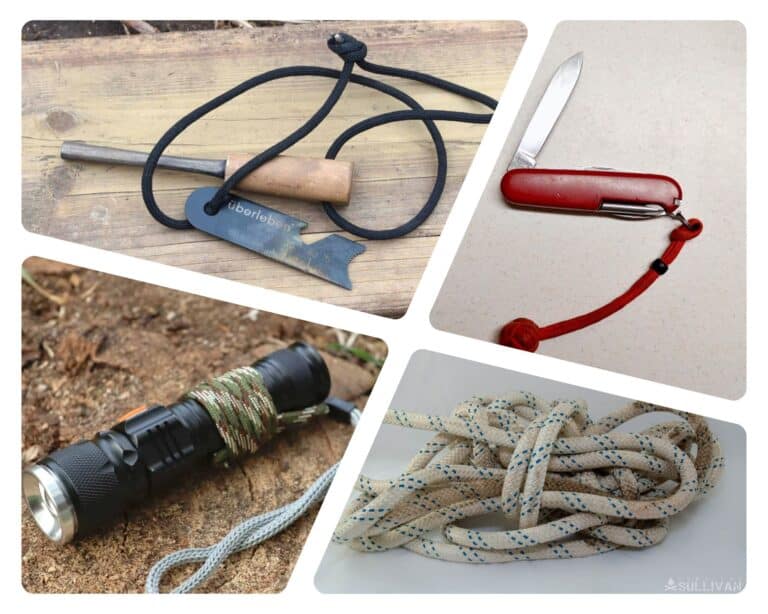

Alone is one of the most popular survival competition shows that has ever aired on television… Currently numbering more than 110 episodes and 11 seasons, the show chronicles the struggles of 10 people who’ve been dropped into the middle of an inhospitable and remote wilderness – alone, of course – with no backup and precious little gear.
Their objective? To last as long as they can, with the final remaining contestant getting a $500,000 cash prize. Aside from clothing and a basic medical and emergency kit, each participant may only choose 10 items from a list of 55 to take with them.
Seeing the items that contestants pick, and why, is a huge part of the appeal and can be highly instructive for preppers.
Below we’ll be looking at that list of 55 survival items and what they are used for, along with 33 that are explicitly forbidden by the rules of the show.
In this category, we find items that are useful for constructing shelter or bedding, as the name suggests, or keeping clean and tidy.
Based on the seasons I’ve watched in the past, most of the participants forgo the hygiene items almost entirely for more useful stuff that can help them sustain in the wilderness.
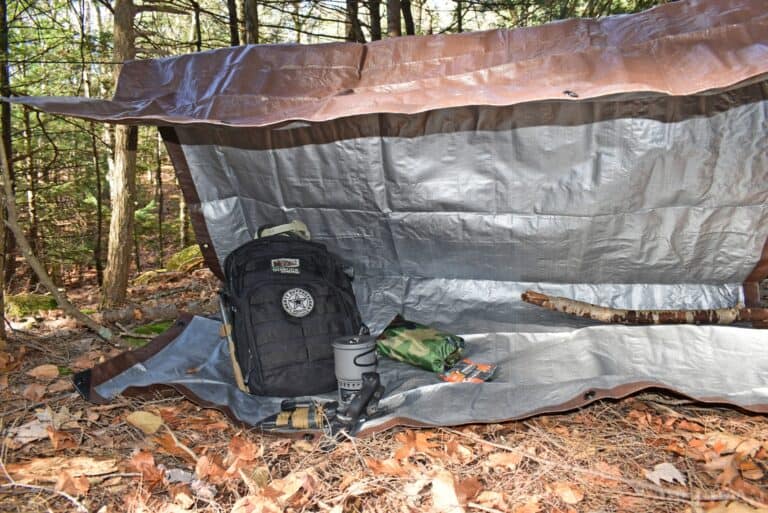
A ground cloth or tarp can be fashioned into a tent, used to keep off wet or muddy ground, and countless other tasks.
Contestants have broad leeway in the style, materials, and construction of this item since, like everything else on this list, they must purchase it themselves and have it approved.
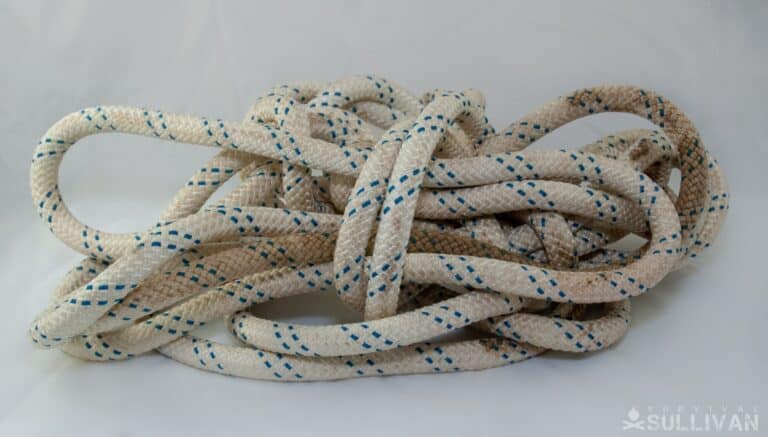
A 10 m length of sturdy climbing rope might seem like an odd inclusion at first because what contestant wants to risk their life climbing during a situation like this, but rope this strong is always useful.
From hoisting animal carcasses to creating improvised constructions, it can come in handy.
You know it, you love it. Every prepper adores paracord for its extraordinary combination of strength, flexibility, and durability.
It has countless uses and is a popular item among contestants. 80 meters can go a long way, and clever survivors can gut the filaments to use them for other tasks.
This small-diameter cotton cord might seem useless compared to paracord, but it has its own advantages.
Lightweight, delicate, and still very strong, it can be used to repair clothing and other cloth, burned as tinder, and for various other chores.
A good sleeping bag is a critical survival item, especially considering the approach of winter is a major hazard on the show.
A good shelter is only part of the puzzle; without a sleeping bag, it can be really difficult to stay warm when the temperature plummets.
A bivy bag is sort of between a tent and a sleeping bag. It has a long, low, tapered section that goes over a person’s legs, and a shorter but taller raised section that is just big enough for a person to sit up in if sitting on the ground.
Lightweight, space-efficient, and easier to keep warm with body heat compared to a tent, they are popular with lightweight backpackers.
You can have the warmest tent or sleeping bag in the world, but if you’re forced to sleep in direct contact with the ground you’re going to get very cold, not to mention wake up sore and stiff.
A sleeping pad will give you a soft surface to rest on, and also let you stay warmer than you would if touching the ground.
A hammock can be a great thing when it comes to sleeping gear: with a couple of sturdy trees, it can be set up quickly and taken down just as fast if you need to break camp.
It keeps you off the ground by design, helping to keep you from losing body heat to the earth and also out of reach of crawling critters. But they are at their best in warmer climates; in the winter, it can be hard to keep warm in one.
You know what this is. Cleanliness is next to godliness, but cleanliness can still be critically important even in the middle of a survival situation.
Going around dirty greatly increases the chances of skin infections and also contracting various foodborne illnesses like dysentery.
For brushing your teeth, no surprises here. Toothpaste can also be repurposed to help polish and remove rust from metal goods, but most contestants don’t waste their time with it considering they only have 10 precious items to bring along.
Again, hygiene is important in survival scenarios, but it is a distant concern compared to shelter.
Basically just a washcloth. Again, something hugely important to everyday life, but an item that most contestants on Alone have seen fit to go without.
In the context of a deep wilderness survival situation, floss might seem like a real luxury item, however important it is to our normal bathroom routine.
But clever preppers know that this stuff can be solid gold if you need sturdy thin cordage: it can work well as improvised fishing line, lashing, whipping, and more.
It’s a pretty questionable item on the list, but any contestants that want to really lather up and get clean could be well served by a tiny bottle of environmentally friendly, biodegradable shower soap.
I think most Americans know it as body wash, but oh well. To my knowledge, no contestant has ever picked this stuff.
Now here’s an item I would be hard-pressed to go without. Staying clean-shaven helps me keep my head in the game no matter what’s happening.
Although a proper razor blade has some survival utility, there are too many other big-ticket items that contestants can choose from to make this worthwhile…
A full-size bath towel. Nothing more, nothing less.
Another peculiar item and I have to wonder if any contestant ever considered using one of their 10 slots for equipment on a humble comb.
This is one of the biggest and most popular categories containing supplies, gear, and food that provide sustenance.
I’ve got to tell you, I would be hard-pressed to pick just 10 items from this entire category if I was going out into a deep wilderness survival situation! It’s here you can really start to see the dilemma that contestants run into before they ever get dropped off at their territory site on Alone.
Some of our survivors are lucky enough to have a pond, river, or lake in their territory. If that’s the case, and assuming the water isn’t frozen over, this big roll of fishing line and assorted hooks would no doubt come in handy assuming they could improvise a fishing rod.
However, contestants are not allowed any lures, and most fashion them from whatever materials they can find or craft if they want them.
For skilled archers, a real bow can be a godsend when it comes to bagging dinner or protecting yourself from dangerous predators, a situation that did come up in season 9 set in Labrador; polar bears were in the area!
Compared to high-tech modern bows, a primitive recurve or longbow might not seem like much but they are still highly capable in the right hands.
A gill net is another fishing tool, one used to snag fish by their gills. If a fish trap can be constructed or the waterway is narrow, a gill net can harvest fish in great quantity with very little real effort and also frees up a participant to do other things instead of manning a fishing rod.
A net style foraging bag useful for holding gathered edibles and other things. Helpful, but it pales in comparison to lots of other items in this category and elsewhere on this list.
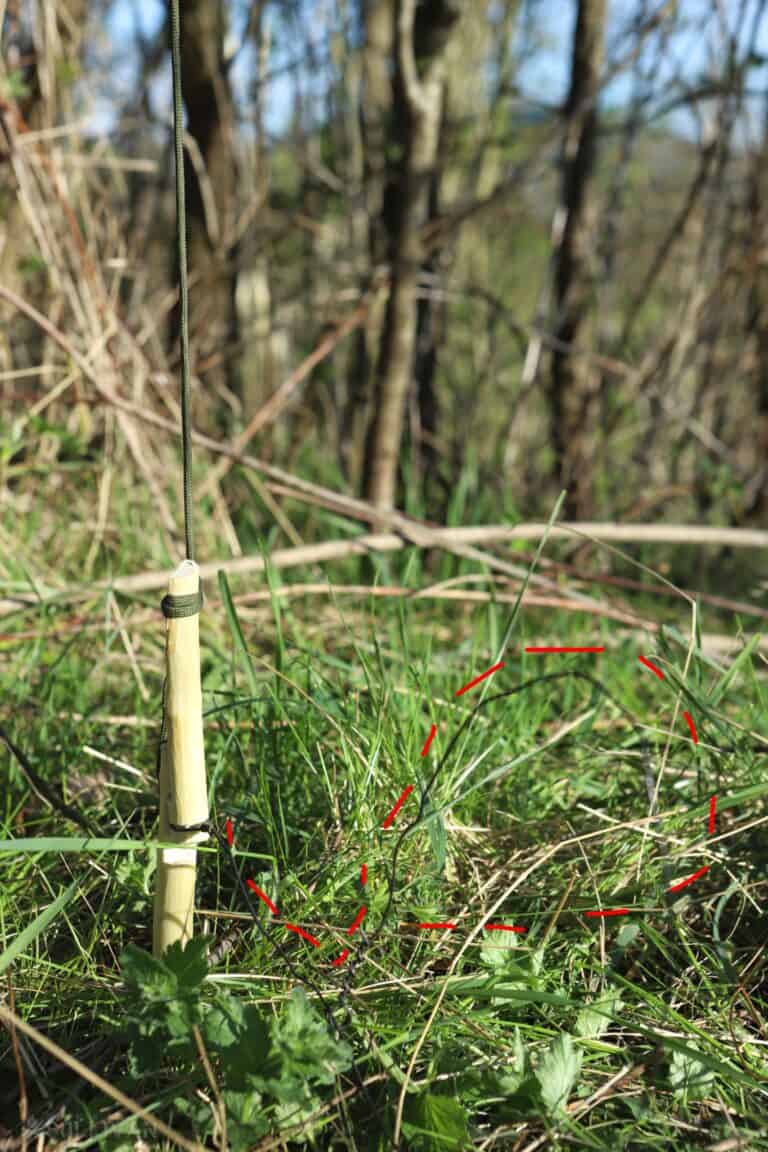
It’s a specialized skill set, but trapping is one of the best ways to multiply your efforts if you want to catch large or small game.
With a little knowledge of animals in the area, and the patience needed to set up and check multiple traps, you are all but guaranteed to catch a few.
This snare wire would definitely come in handy for the job, but you’ll note that it lacks toggles and other devices needed to construct sophisticated traps.
Don’t laugh; a slingshot is a surprisingly sophisticated and powerful weapon for bringing down birds and small game in the hands of a good shooter.
Considering how portable and quiet it is, it has some real utility in a survival situation like this, and even comes with a replacement band.
30 ball bearings don’t seem like a lot and they are likely to get lost with use, but a slingshot can also make good use of pebbles and other things as ammo. This is a highly versatile hunting tool, one that all preppers are wise to gain skill with!

When you’re in deep country and really hungry, nothing beats beef jerky. Highly nutritious, filling, and very long-lasting, this would be a tempting choice for sure if I was going on the show. Still, 2 pounds isn’t very much for a long-term survival scenario…
As an emergency backup food source that’s ready to eat, this could be a fine choice, but I’d have to think hard about picking this versus some of the following foods.
2 pounds of dried legumes or any other kinds of beans will provide a ton of calories along with needed vitamins and minerals in a survival situation.
This is one of the very best long-term shelf-stable staples you can have, but for field use, they have some serious drawbacks…
They need to be soaked prior to cooking to make them safe to eat, and they must be boiled for a long time in water. That means an equally big investment in fuel and also cookware!
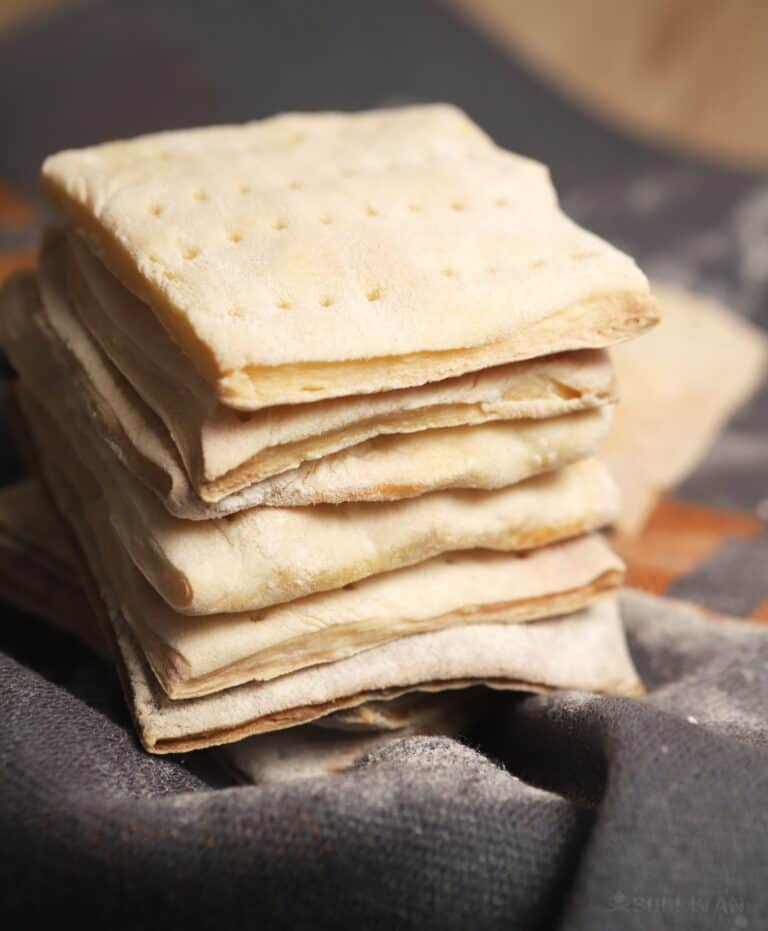
For those unfamiliar with it, hardtack is basically a type of unleavened bread consisting of flour, water, and sometimes a bit of salt. It is incredibly durable and long-lasting if kept dry but is nothing more than bulk calories with very little in the way of actual nutrition.
Though it‘s been a staple of militaries, adventurers, and frontiersmen for centuries, the stuff is brutally hard and not very appealing.
When you’re upset, tired, scared, or just need a little mental boost, almost nothing is better than chocolate.
I imagine this stuff would seem like manna from heaven if I was on the show and completely isolated! 2 lbs of chocolate will provide a ton of calories, but it’s highly vulnerable to the weather and pests.
Still, a little something to help keep your head in the game and celebrate survival milestones might be worth taking assuming your primitive skills are up to snuff.
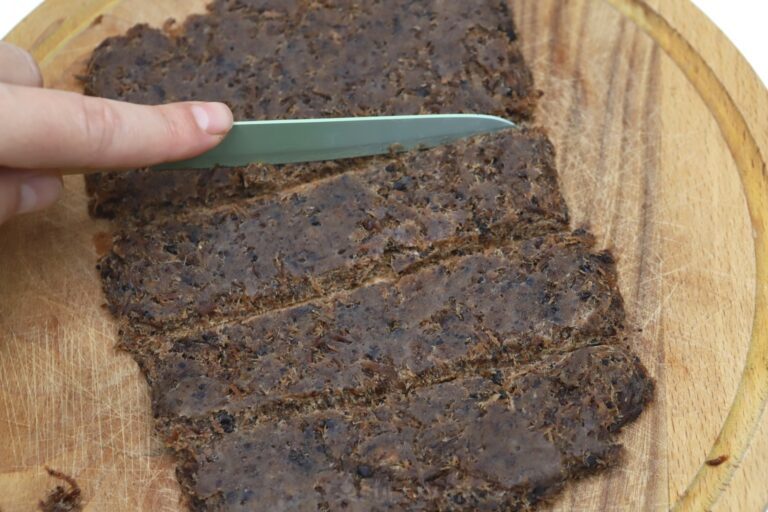
Now here’s a classic survival ration I am happy to see on the list! Pemmican is an ancient American Indian food consisting of dried and powdered meat along with rendered animal fat and sometimes dried berries.
Long-lasting, very filling, and highly nutritious, it will stick to your ribs and keep you alive today like it did way back when. It’s also versatile and can be used to bulk up soups and stews or fried as a sort of patty.
Stands for good old raisins and peanuts. Simple trail mix, basically. It has a nearly optimal profile of protein, fats, carbohydrates, vitamins, and minerals. A good thing to have in all kinds of survival scenarios.
Flour. That’s it. It would be hell trying to keep this stuff from getting wet and turning moldy, but with nothing more than flour and a little water you can make basic bread or hardtack, something which can keep you alive.
Exactly what it says. Rice is nutritious and easy to prepare with a little bit of boiling water, while sugar and salt can provide energy and needed minerals and also support staying hydrated.
Obviously, it can also greatly improve the flavor of any wild-sourced food. I imagine the temptation is to take this along with the flour…
Another seemingly curious option on the list, all kinds of edible fats can be used to bulk up meals with calories and nutrients, and potentially even used for waterproofing certain other materials.
When you are working hard in the middle of a legitimate wilderness survival scenario, you’re going to be sweating buckets and that means losing tons of salt.
Adding that salt back into your diet will replenish electrolytes, or a block like this can be used as a highly effective bait for attracting mammals; they all need salt too!
I don’t consider a 2-quart pot a large pot, but I guess when it comes to what’s considered portable or suitable for field use on the show it is.
Though simple, this implement has many uses for participants on Alone; from collecting and boiling water to preparing soup or some other kind of dinner, this will do the trick.
A frying pan is the implement of choice for, what else, frying. It could also be used for processing smaller quantities of water as with the pot above though it is hardly optimized for this.
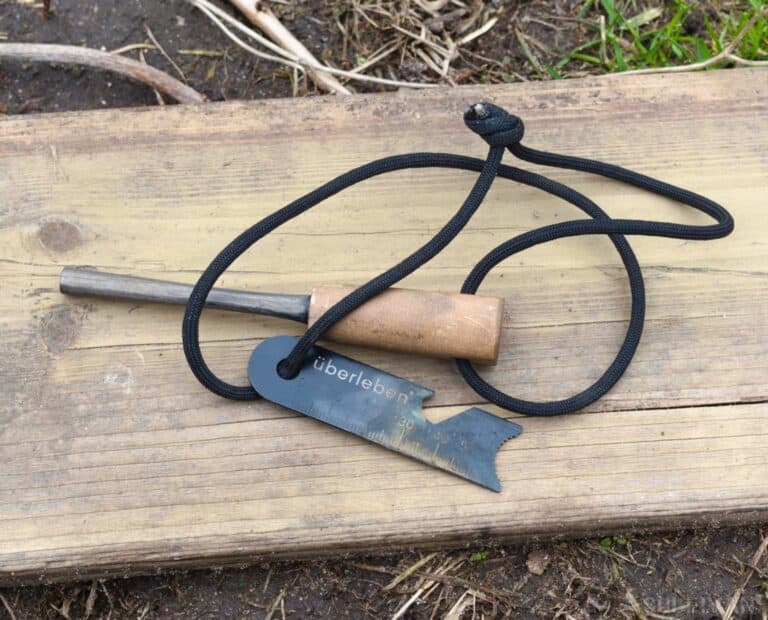
Another tool that all preppers know and love. Considering the ban on modern ignition sources, something we will see later on in our list, this is the very best bet for getting a fire going reliably and quickly for participants on the show, and is commonly chosen.
Just an enamel bowl. Multiple uses, but likely superfluous compared to a simple pot with a long handle…
A spoon. Laugh all you want, when you need one and don’t have one things get messy quickly, and whittling one from a branch or improvising one from other materials is much easier said than done.
You know what this is, and also how important it is. Being able to collect and carry water easily is huge in all kinds of survival situations.
Again, contestants on Alone can choose nearly any design they can think of as long as it gets approved prior to heading towards the drop point.
If I were heading out, I’d go with a metal water bottle or traditional canteen that could be heated over a fire.
Another massively important gear category for contestants, picking the right tools can make the difference between struggling to even stay alive or mastering the immediate environment.
The choices, of course, are complicated based on the fact that contestants don’t know where they’re going to be dropped and where their territory ends. Remember, they cannot leave the territory for the duration of the show if they want to win!
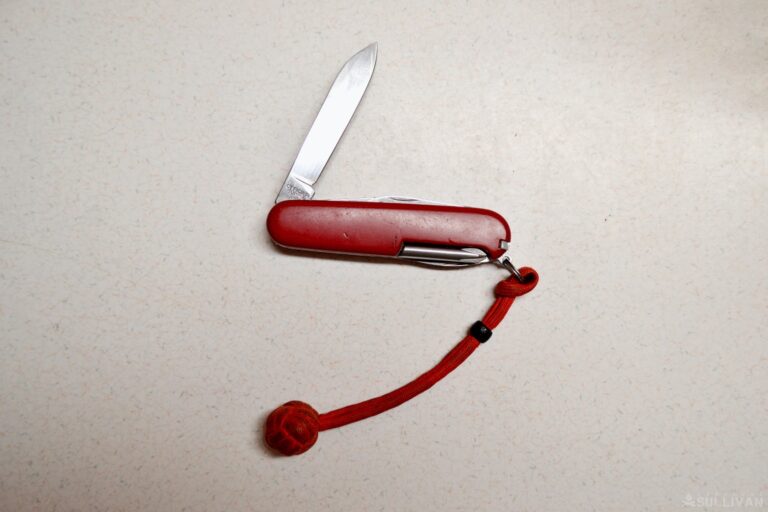
No prepper worth their salt would consider leaving the house without one of these, but as handy and versatile as they are they might not be up to the task of hardcore survival owing to a lack of strength.
Even the very best is far more prone to breakage compared to a fixed-blade knife, though I would be sorely tempted by the additional capability of a Swiss Army knife.
A stout hunting knife, and ostensibly a proper bushcraft knife, would fit in this category and might be the single most important tool you can have in a survival situation.
Useful for crafting, harvesting, building, and, in a pinch, desperate self-defense, you should never willingly go afield without a good fixed-blade knife.
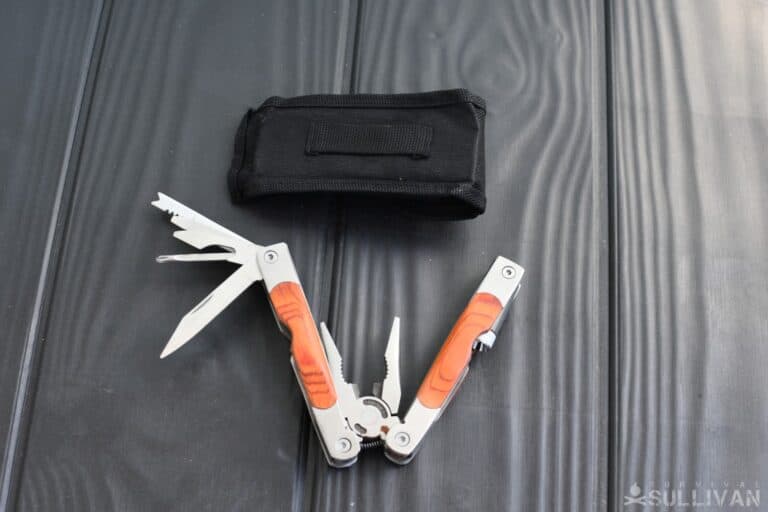
Basically a bigger and sturdier version of the classic Swiss Army knife, this time with good usable pliers, this is another tool that is found in basically every bug-out bag in the nation. But is it a good choice for surviving on Alone? I don’t know.
It’s a value proposition owing to its many-in-one nature, but aside from the knife and potentially the pliers, I don’t know how much use the other tools would offer you.
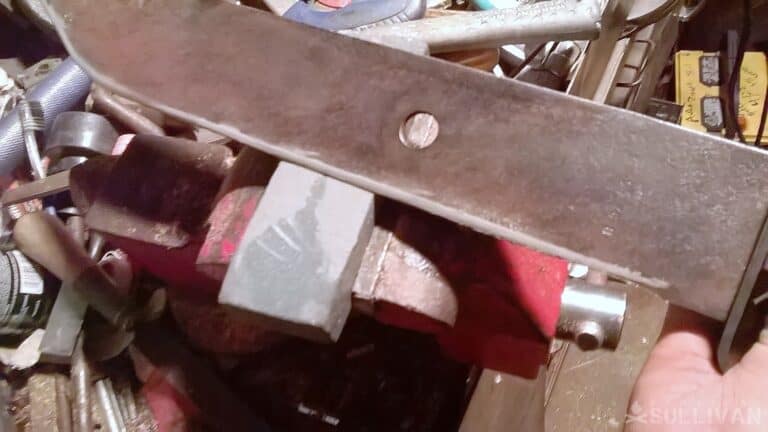
Cutting tools are only as good, and safe, as their edge is. Periodic touch-ups and proper resharpening are necessary if you want to keep getting work done. But, man, is it painful having to dedicate an equipment choice just to a sharpening stone!
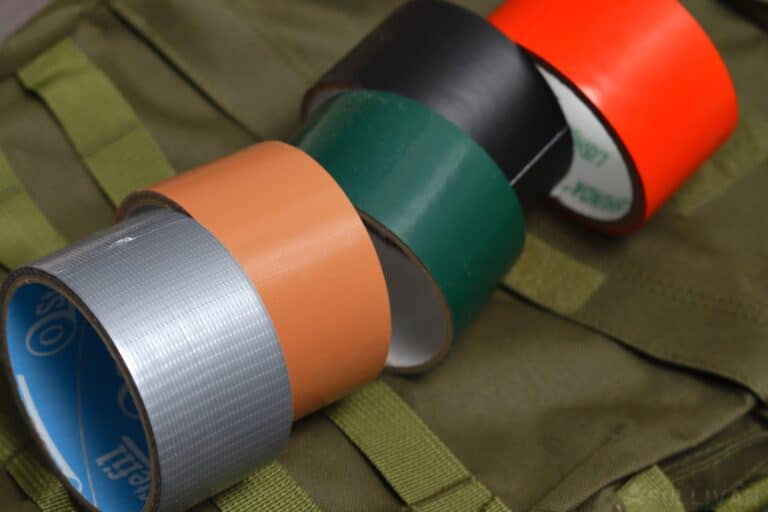
Another greatly beloved item that has a place in the hearts of all preppers, duct tape is perfect for waterproofing, improvised repairs, and hasty construction. Electrical tape is also a choice, though I’m not sure why someone would pick that over duct tape.
Digging is more important in a survival situation than you might think, useful for clearing a campsite, redirecting water, building traps, burying waste, and a lot more.
Doing this by hand or with improvised materials is agonizing and risky, but even a small shovel will make short work of the job.
Definitely an interesting and multi-use choice for a tool. A machete can easily chop and hack away limbs and small-diameter trees and is just the ticket for blazing a trail through thick underbrush.
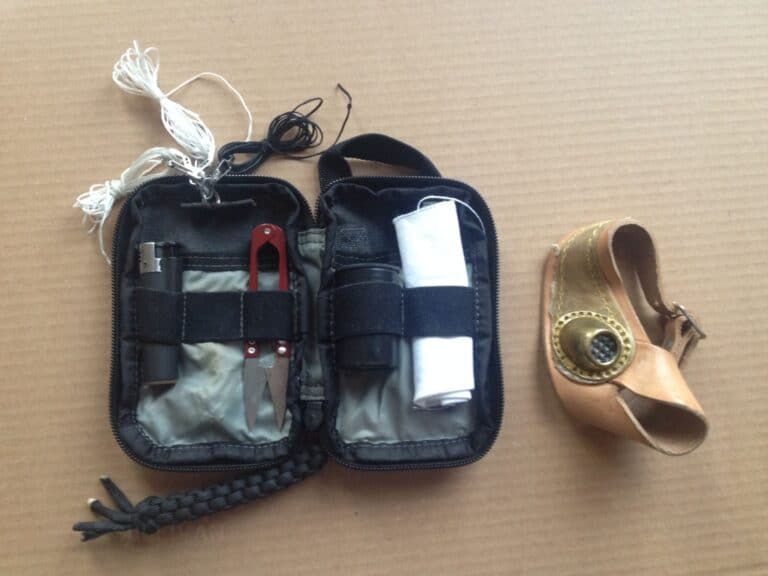
The utility of a sewing kit should be obvious. You better believe all sorts of things will rip, tear, and blow out their stitches when you are surviving out in the wild.
From repairing pants and footwear to closing up a hole in a tent, if you’ve got the skill, this will help you get it done.
A carabiner is nominally used for climbing, but they have lots of other uses besides. They come in handy for hoisting gear, improvised rigging, and a lot more.
Would I pick one of these if I was going to make a go of it on Alone? I doubt it, but some people might know how to get more out of them than I do!
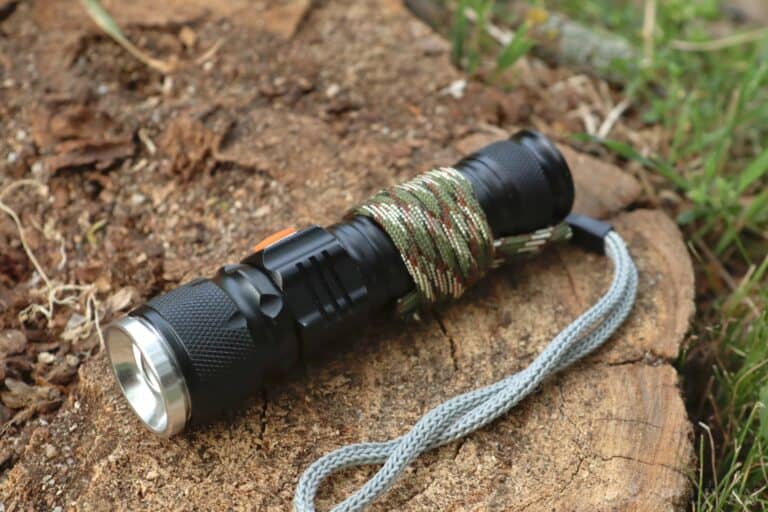
Nothing beats a flashlight when you need to chase away the dark. The trick, of course, is keeping it powered.
With no option for additional batteries, you’d be forced to use the thing only when absolutely necessary or on very, very low power if you were going on the show.
Alone typically drops contestants in northern climates with brutal winters, and depending on the region and the biome, a pair of ice spikes might certainly come in handy for moving around without risk of slipping.
A scotch-eyed auger is a clever tool used for drilling holes the old-fashioned way, by hand.
You can easily cut off and then whittle a sturdy branch to serve as the handle; that’s what the scotch eye is for! This could be an inspired tool choice for construction…
An adze can be thought of as a specialized type of axe, one with two blades at perpendicular angles to each other. It’s used not only for cutting wood but also for shaping it, and would be a huge benefit for fashioning a better shelter.
A draw knife is another wood-shaping tool, one that can be used for splitting, flattening, and planing. For someone with the skill, the resources, and the time, this and a couple of other tools could allow the fashioning of a proper cabin or hut!
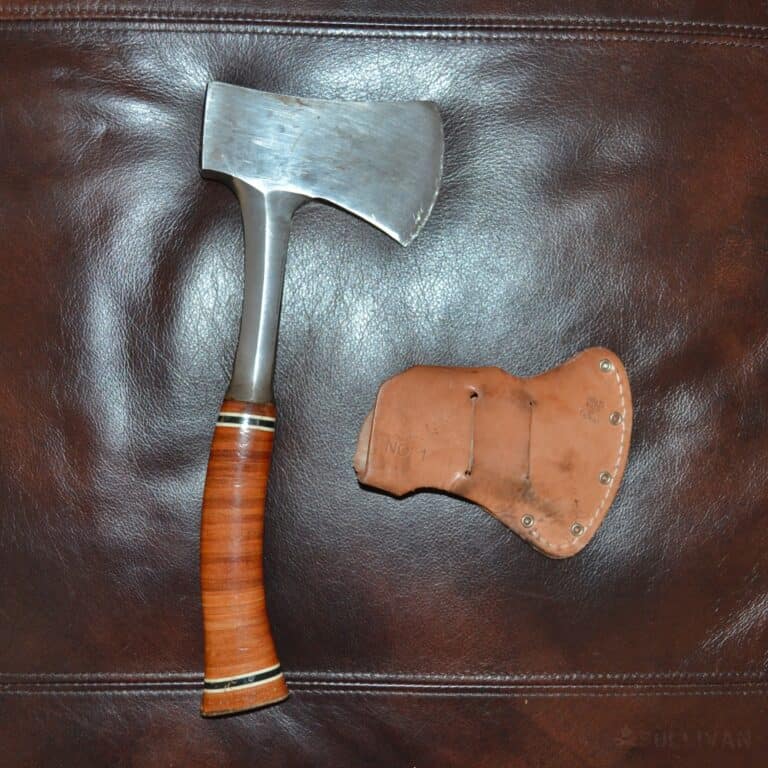
Ounce for ounce, this would be my number one choice of tool as long as I knew I was heading into a forested area. A hatchet is small enough to be portable and maneuverable and can easily cut down, split, shape, and even whittle in a pinch.
A good saw, of any kind, is another worthy choice for a forestry tool. From small trees to large limbs, a saw can easily bring them down and then buck them into manageable sections.
It’s not ideal for splitting, though, and I have concerns about the long-term durability of a folding camp saw.
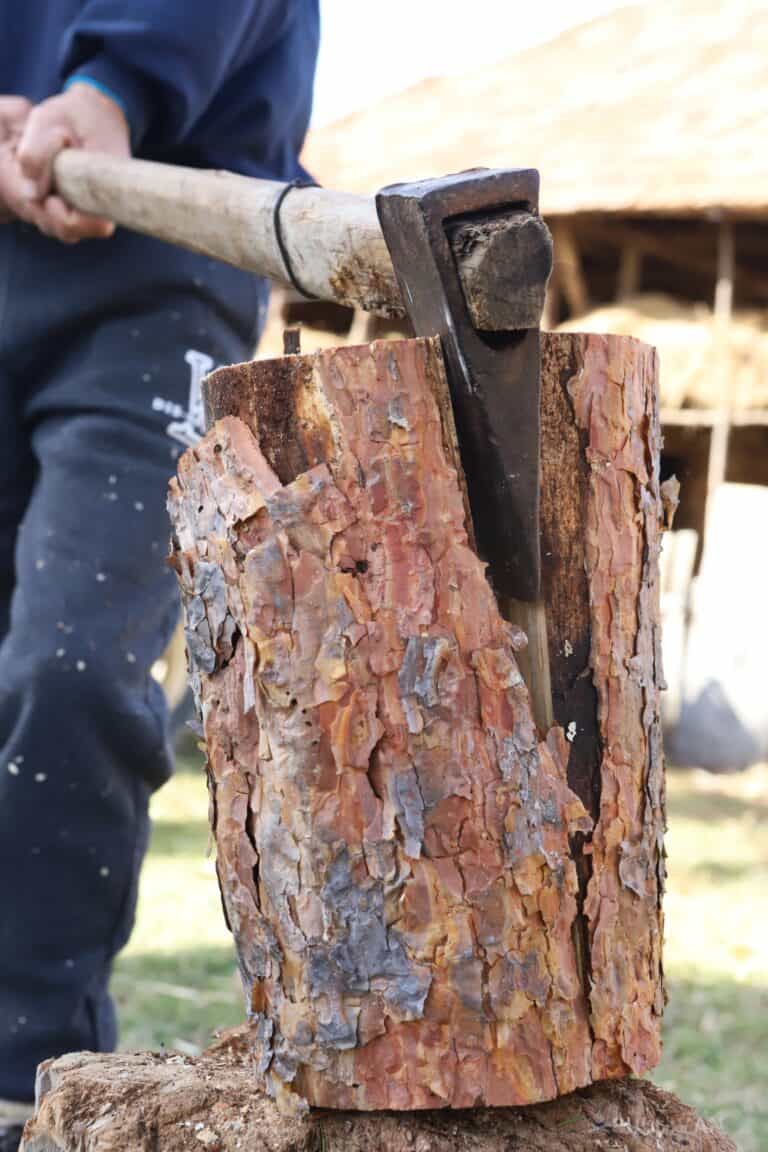
The classic and quintessential forestry tool, a full-sized axe can make short work of even large trees, easily split sections of branches or logs, and be used as an improvised sledgehammer if it has a proper poll on the opposite side of the head.
Contestants on Alone can choose from a lot of gear, as we’ve discovered, but there’s nearly as much that they explicitly cannot bring with them.
In fact, according to the History Channel, these prohibited items are really just an example of things they cannot bring; anything that isn’t on the list above or part of the basic loadout of clothing, first aid kit, and camera equipment issued to each contestant is prohibited.
No fuel, of any kind, may be brought into the field. That means no propane, no sterno, no lighter fluid, no alcohol.
Likewise, lighters rely on liquid fuel and so are strictly forbidden as a fire-starting resource for competitors.
Somewhat surprisingly, even matches are forbidden. I think the opportunity is there to make a single book or box of matches a valid item, one that must be used sparingly, but the showrunners don’t see it that way.
Now here’s an item that I know most folks stuck in the middle of nowhere will wish they had, especially if they are in the woods and anywhere near water.
Survivors will have to resort to other means of protection against these biting, bloodsucking little scumbags.
What would certainly be a major blow to some of us, both sunscreen and Chapstick are forbidden.
Sunscreen, I’m really not sure why; I guess producers just want viewers to see the drama of someone roasting alive under the remorseless sun while they work. Chapstick, though, can be used as an accelerant.
Another somewhat surprising proscription: no sunglasses, and no transition lenses in the case that a competitor wears corrective eyewear.
I guess your eyes are always going to be at risk on this show: goggles, of any kind, are one of the banned items!
No makeup and no beauty products of any kind are allowed among the personal possessions of competitors. Puzzling, but there you have it!
A highly controversial decision on the part of the producers is the fact that maps are not on the approved gear list.
Ostensibly, this might make things too easy for those who are trying to survive in the wilderness. I think they should be permitted for reasons of safety, emergency GPS locators that each contestant carries be damned.
Surprisingly enough, not even compasses are permitted! Any contestant that gets too far away from their camp could be at real risk of getting lost, with not even a reliable bearing available to help them find their way back.
The History Channel does not say what unapproved technology is exactly, but I think it is safe to assume that this means all kinds of electronics and other gadgetry that do not explicitly fall under the allowable item categories we talked about up above.
Snare wire is okay, but professional, pre-made snares and other animal traps are not. The point is so they make their own snare wire traps.
No guns of any kind can be carried in. End of story.
No guns, and no ammunition. Presumably, someone might try to fashion a zip gun from tent parts or something or just pull the bullets and use the powder as an accelerant.
The producers really have thought of everything when it comes to mayhem on the show. No explosives, and no gunpowder are permitted.
No animal poisons of any kind are allowed on Alone.
I suppose the idea of using poison to bring down large or small game might be worthwhile, but when you think this through it’s really not worth the trouble if someone’s going to turn around and try to harvest the meat. Risky business!
As with snare wire above, you can have the line but you can’t have an actual fishing rod. If participants want to get any fishing done they’ll have to fashion their own primitive rod from natural or scavenged materials.
Beyond the fishing line and hooks explicitly okayed in the previous sections, competitors cannot bring any lures, flies, or bait with them.
Aside from the gill nets we talked about previously, fishing traps are also verboten.
This seems a bit peculiar considering there are all kinds of food that are allowed, but this is a catch-all category for everything that isn’t explicitly on the “good-to-go” list.
Animal decoys, of any species and any type, are prohibited from use for the duration of the competition.
No animal calls of the kind typically used for hunting can be used, either.
If anyone wants to bring down big game or birds, they’ll have to do it the old-fashioned way or just get really, really good at imitating these animals!
A nice idea, but tree stands are forbidden for the purposes of hunting or anything else.
As I mentioned up above, primitive compound or longbows are okay, but modern bows and crossbows are not.
No optical aids, of any kind, can be brought in by contestants. This means no binoculars, no monoculars, no spy glasses, rifle scopes, anything.
Tents and other ready-made shelters, aside from bivy bags which are okayed by type and model prior to heading into the field, may be carried.
I would be hard-pressed to go without my trusty jetboil camp stove on this show, but it seems I would have to!
And, just to make sure they have all bases covered, you can’t bring a pressure cooker or any other kind of cooking appliance with you.
Hydration packs, and I suppose they’re talking specifically about hydration bladders, are another no-go item.
Fire pits of any material, make, model, and description may not be brought to the field by participants on Alone.
Electric flashlights are okay, but electric lanterns are not. Likewise, propane lanterns are banned also, as are all other liquid-fueled lanterns.
I’ve wondered why inflatable boats are specifically banned by name. The object is to stay in the assigned territory and outlast all the other contestants.
Did a contestant try to escape by boat before? Does it give them an unfair advantage fishing? I have so many questions. Nonetheless, no boats!
This right here would be another devastating challenge for many of us. You can’t bring any kind of portable water filter, filtration device, iodine tablets, or any similar hydro gear with you into the challenge!
Contestants have been involuntarily evacuated before for waterborne illnesses, specifically Benji Hill in season 9 who got taken down by giardia on day 27.
Anyfood preservation must be done the old-fashioned way, using primitive techniques or the power of cold weather itself. Contestants cannot use a cooler or anything similar to get the job done.


Tom Marlowe practically grew up with a gun in his hand, and has held all kinds of jobs in the gun industry: range safety, sales, instruction and consulting, Tom has the experience to help civilian shooters figure out what will work best for them.
